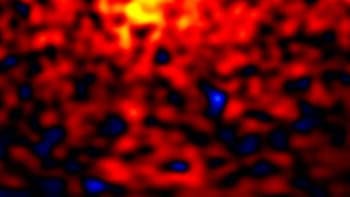Two pieces of experimental evidence that have been at odds over the existence of the "axion" -- an ultralight particle that could make up dark matter -- may now have been reconciled. Physicists in the US claim to have settled the discrepancy between the PVLAS and CAST experiments by considering the temperatures at which the axions would be produced (Phys. Rev. Lett. 98 050402).

Axions were first proposed 30 years ago to resolve a discrepancy between experimental findings and quantum chromodynamics (QCD), a theory that describes how the strong force binds quarks together within protons, neutrons and other hadrons. However, physicists have since realized that axions could have just the right properties – a small mass and a coupling to light – to be the elusive particles that make up dark matter, a substance thought to constitute up to 95% of matter within the universe.
In March last year, researchers working at the PVLAS experiment in Italy shone a laser beam through a strong magnetic field in a vacuum and noted the beam’s polarization rotated slightly. At the time many physicists thought that this was due to an ultralight particle coupling with photons in the beam, and so heralded it as the first glimpse of the axion. If it were an axion, however, the implied mass would contradict findings of the CAST experiment based at CERN, where researchers have been looking to capture axions travelling from the Sun by converting them to x-rays.
Now, Rabi Mohapatra from the University of Maryland and Salah Nasri from the University of Florida say that the two results can be reconciled if one considers the source of the axions. Whereas in the PVLAS experiment axions would have been produced locally in the laser beam at room temperature or colder, the CAST experiment was monitoring axions produced in the Sun’s core at about 10 million degrees Celsius.
Mohapatra’s theory is that a phase transition could occur at Sun’s high temperatures that destroys the coupling altogether, rather like a magnet losing its magnetism when heated. This would account for the null findings of CAST. However, this theory would also require a new particle – a force-carrying boson with a mass of about 100 MeV – to account for the coupling observed in PVLAS. Although such a particle has not been seen, Mohapatra says that it could be sought in future experiments involving the decay of upsilon particles.
Mohapatra and Nasri are not the first physicists to try to reconcile PVLAS and CAST’s findings. Last October, for example, Eduard Massó and Javier Redondo from the Universitat Autònoma de Barcelona in Spain claimed to have constructed a plausible theory using multi-charged particles (Phys. Rev. Lett. 97 151802). But Mohapatra dismisses their suggestion: “Our proposal uses conventional ideas, whereas Massó’s proposal invokes unusual effects inside the Sun.”
“We are confident that if PVLAS experimental results are confirmed, our model will be one of the best ways to understand the effect, providing a new and interesting direction for new physics,” he added.




